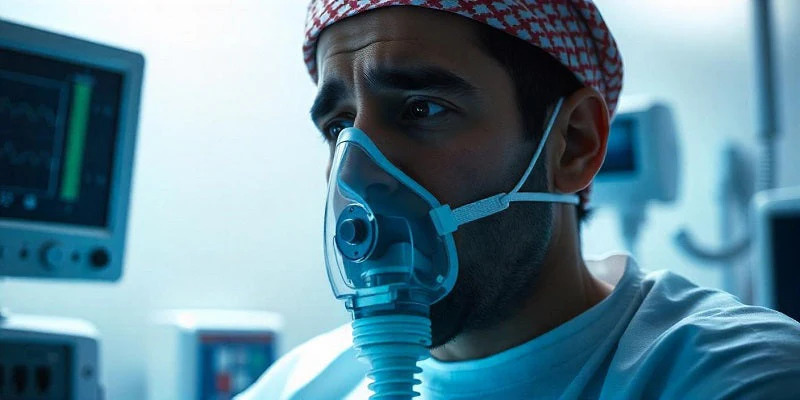Struggling to catch your breath can be scary, can’t it? Dyspnea, commonly known as shortness of breath, is a condition that affects millions of people worldwide. It ranges from a minor inconvenience to a sign of a severe medical issue. Let’s dive deep into what dyspnea is, why it happens, and how it can be managed.

What Is Dyspnea?
Definition and Medical Context
Dyspnea refers to the subjective sensation of difficulty or discomfort while breathing. It’s a symptom rather than a standalone condition, often pointing to an underlying health issue.
Common Misunderstandings About Dyspnea
Many confuse dyspnea with general fatigue or being out of shape. However, it is distinct in its intensity and often linked to specific medical triggers.
Symptoms of Dyspnea
Acute vs. Chronic Dyspnea
· Acute Dyspnea: Sudden and severe, often indicating emergencies like asthma attacks or heart issues.
· Chronic Dyspnea: Persistent, typically associated with long-term conditions such as COPD.
Physical and Emotional Indicators
Physical Symptoms
· Rapid breathing
· Chest tightness
· Wheezing or gasping
Psychological Effects
The constant struggle to breathe can lead to anxiety, stress, and even depression.
Causes of Dyspnea
Respiratory System Disorders
Asthma
Narrowed airways cause breathing difficulties, often triggered by allergens.
COPD (Chronic Obstructive Pulmonary Disease)
A progressive condition where airflow is obstructed, leading to persistent dyspnea.
Cardiovascular System Issues
Heart Failure
Fluid buildup in the lungs can make breathing feel like a chore.
Pulmonary Embolism
A sudden blockage in the lung arteries can result in severe breathlessness.
Other Contributing Factors
Anxiety and Panic Attacks
Breathing patterns change during high stress, mimicking dyspnea.
Anemia
Low oxygen levels in the blood can leave you gasping for air.
When to See a Doctor?
Red Flags That Require Immediate Attention
· Severe shortness of breath
· Bluish lips or nails
· Chest pain
Diagnosing Dyspnea
Medical History and Physical Examination
Your doctor will ask about symptoms, medical history, and lifestyle habits.
Diagnostic Tests
· Chest X-rays
· Pulmonary function tests
· Blood tests
Treatment Options for Dyspnea
Medications
Bronchodilators
Effective for asthma and COPD to relax airway muscles.
Oxygen Therapy
Helpful for those with chronic respiratory issues.
Lifestyle Modifications
Breathing Exercises
Techniques like pursed-lip breathing improve oxygen intake.
Avoiding Triggers
Steering clear of allergens or pollutants can reduce episodes.
Coping with Chronic Dyspnea
Psychological Support
Counselling and mindfulness can alleviate stress-related dyspnea.
Pulmonary Rehabilitation
Structured programs that improve lung function and quality of life.
Preventing Dyspnea
Tips for Respiratory Health
· Stay active with regular exercise.
· Avoid smoking and second-hand smoke.
· Maintain a healthy weight.
Also read: https://sleepsiapillows.blogspot.com/2024/12/understanding-dyspnea-causes-symptoms.html
Conclusion
Dyspnea can be unsettling, but understanding its causes and solutions empowers you to take control. Whether it’s managing chronic symptoms or seeking urgent help, timely action can make a significant difference.
FAQs
1. What are the most common causes of dyspnea?
Asthma, COPD, heart failure, and anxiety are frequent culprits.
2. How is dyspnea different from shortness of breath?
Dyspnea is the medical term for shortness of breath, encompassing various causes.
3. Can anxiety cause dyspnea?
Yes, anxiety alters breathing patterns, leading to the sensation of breathlessness.
4. What are effective home remedies for dyspnea?
Breathing exercises, staying hydrated, and avoiding allergens can help.
5. Is dyspnea a symptom of COVID-19?
Yes, breathlessness is a common symptom of COVID-19, especially in severe cases.
